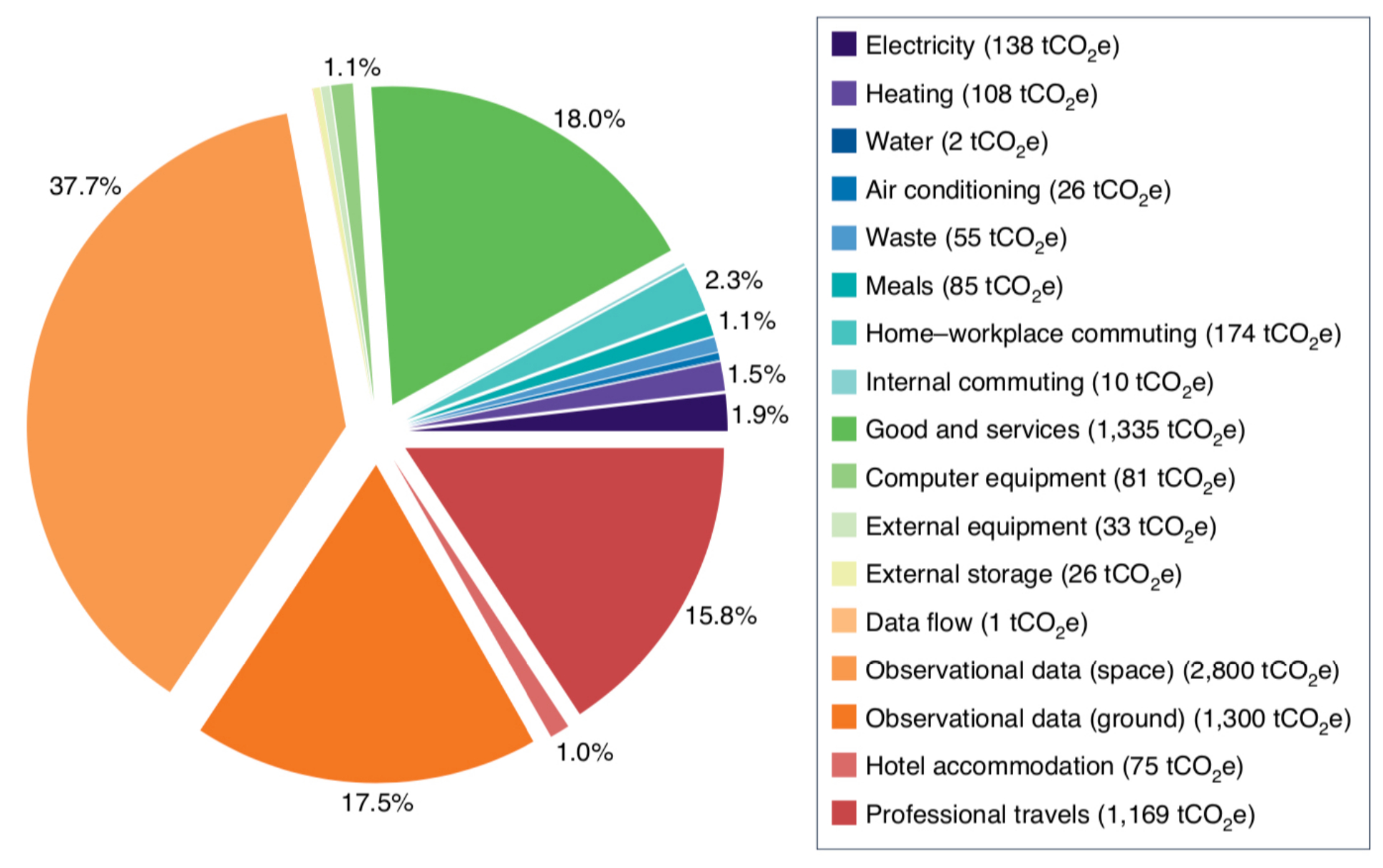Which transition for astronomy research? Lessons from the complete carbon footprint of an institute.
The great means of observation of our universe would be the main source of greenhouse gas emissions of scientific research in astronomy, according to a complete carbon balance carried out at the Institute of Research in Astrophysics and Planetology.
Climate change seems to be accelerating and its effects are becoming increasingly sensitive and devastating. Containing global warming implies a drastic reduction of our net greenhouse gas emissions, by at least half by 2030, and totally by 2050. The dependence of our lifestyles on fossil fuels is such that all sectors of activity must feel concerned by the profound transformation of our societies that this implies. Scientific research is no exception, and knowledge of the environmental footprint of our research activities is a prerequisite for this transition.
The environment commission of the Institut de Recherche en Astrophysique et Planétologie de Toulouse has produced a balance sheet of greenhouse gas emissions from its activities for the year 2019. Published recently in Nature Astronomy, it is the most complete work presented to date for such a structure.

The balance sheet shows that the astrophysics research carried out at IRAP to 2019 standards has generated the production of 7400 +/- 900 tCO2eq for about 260 people involved in this professional activity. The development and use of large-scale observing facilities account for more than 70% of the emissions, while the local infrastructure of the laboratory in Toulouse and Tarbes accounts for only 10%. This result suggests that the main source of emissions lies at the very heart of the research culture, and that any community-wide emissions reduction strategy will only be relevant if it integrates this crucial facet of scientific activities. Improving the environmental footprint of existing research infrastructure and slowing the pace of deployment of new facilities should be high on the list of solutions.
Further Resources
- Scientific paper : A comprehensive assessment of the carbon footprint of an astronomical institute, by Pierrick Martin, Sylvie Brau-Nogué, Mickael Coriat, Philippe Garnier, Annie Hughes, Jürgen Knödlseder & Luigi Tibaldo Nature Astronomy, DOI : 10.1038/s41550-022-01771-3
- The carbon footprint of IRAP, by Pierrick Martin, Sylvie Brau-Nogué, Mickael Coriat, Philippe Garnier, Annie Hughes, Jürgen Knödlseder, Luigi Tibaldo, http://arxiv.org/abs/2204.12362
IRAP Contact
- Pierrick MARTIN – pierrick.martin@irap.omp.eu






